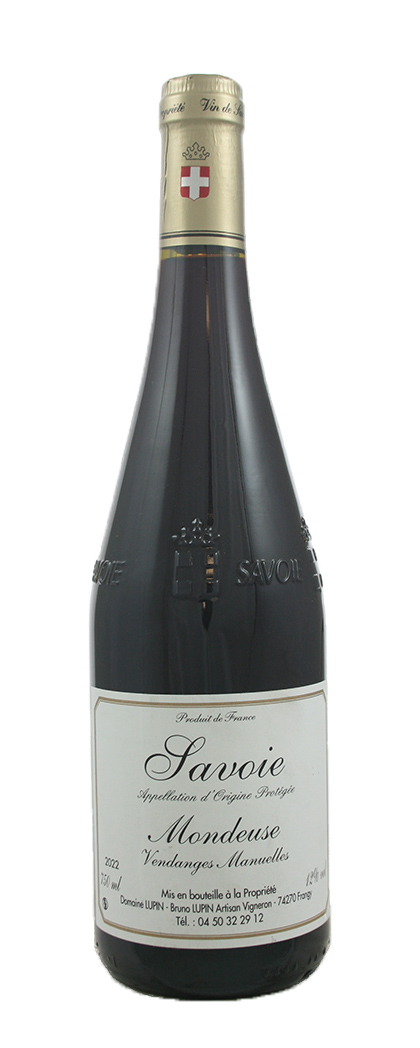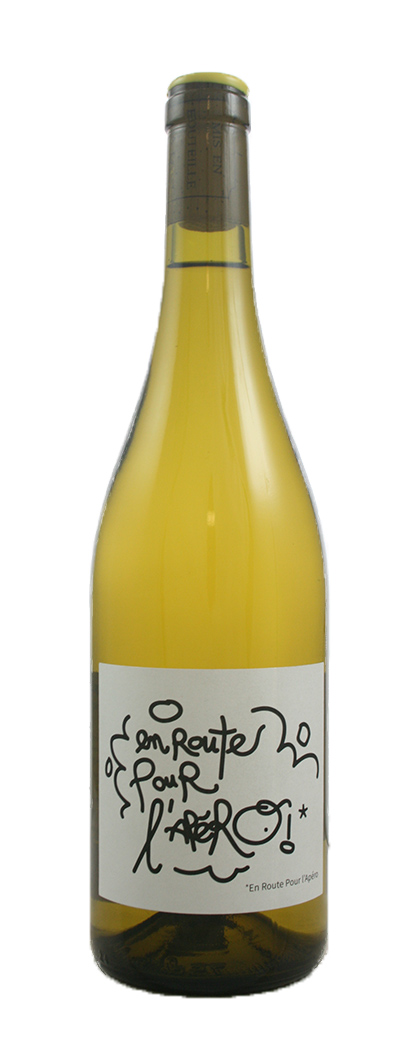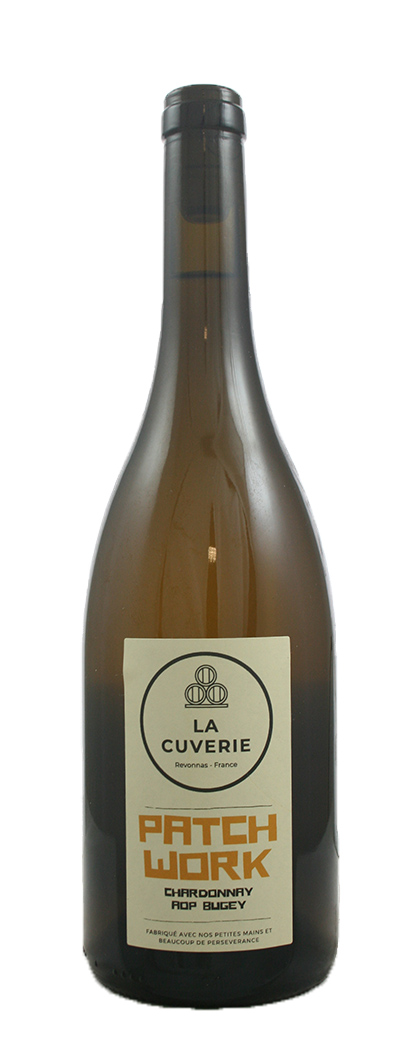The wines of Savoie and Jura are often lumped together as issuing from a kind of agglomerated sub-Alpine region. In reality, they are very different in so many ways – from grape varieties to climate, soils and winemaking styles. We are very excited by the Savoie region and have augmented our selection with a few new wines.
Domaine Belema, Yann Pernuit, Ayze
Domaine Belema is in Ayze in the Haute-Savoie. Yann Pernuit has worked in the region for fifteen years, often as a biodynamic consultant, where he supervised the conversion of Château de la Merande to this proactive method of farming. Having bought grapes originally for his negoce project, Yann planted vines in 2015 on a 1.5-hectare plot of mixed limestone scree, marls and red clay soils, all indigenous alpine grapes such as Mondeuse, Etraire de la Dhuy, and Altesse. Excitingly, he had also taken cuttings from Dominique Belluard’s vineyard (Dominique was his friend and mentor) of the rare indigenous Gringet grape and planted them. The resulting wine does great justice to Dominique’s iconic wines.
The Imago (the name works on two levels of the meaning of the word) is a lovely wine, light in body, yet rich, complex and spicy in flavour. Fermented and aged in sandstone jars and terracotta eggs, this Gringet is textural with notes of meadow-flowers, beeswax, pear-skin and cinnamon. Really nourishing with terrific energy.
Les Vignes du Paradis, Dominique Lucas, Ballaison
Overlooking Lake Geneva (on the French side of the border they call it Lac Léman), Dominique Lucas farms 10 hectares (2.5 of them in Burgundy in the Haute Côte de Beaune and Pommard) of certified organic (practicing biodynamic) vines planted in rich yellow marl and granite soils with a limestone base, and some silex stones on the surface divided between the areas of Crepy and Marin. His vines are separated into 27 parcels of different soil composition, each of which is harvested by hand (he says it takes 2.5 months to harvest here as Chasselas takes so long to ripen) and vinified separately. He is deeply committed to Chasselas, and has also added tiny parcels of Savagnin, Pinot Gris, and Chardonnay. These are not old vines, but in the hands of this accomplished winemaker they are capable of producing wines of depth and complexity. Farming is the key – he employs preparations 500 & 501 as well as infusions of plants culled from the mountains and dried in the domaine.
Dominique himself hails from a family of Burgundian winemakers – he is the 5th generation – who own a small estate outside of Pommard. After completing oenology school, he opted out of returning to the family estate simply because he did not want to work within the strict oversight of the AOC, choosing instead to settle in the Haute-Savoie in 2008. Though his family’s history is steeped in Burgundian ways, you won’t find much of this influence in his cellar. Dominique vinifies his grapes in an array of different amphorae, barrels, and concrete eggs – no doubt a hint at his close friendship with Dominique Belluard who lived about an hour away in Ayze. Fermentations occur naturally and the only addition to the wines is a bit of sulphur at bottling.
Both white and red wines have a distinctive cut and a sublime balance of fruit and minerals, all wrapped up in a package that is as clean, textured, and compelling as anything, these wines offer pure drinking pleasure. As Dominique continues to experiment – he built a concrete pyramid out of sand, rocks, and water found on his property for future fermentations – and as his vineyards continue to mature and thrive, the wines will reach new levels, but we are already sold on their phenomenal purity.
Already fans of the C de Marin Chasselas, we were delighted to meet Un Matin Face au Lac, a Chasselas made in a mixture of amphorae and cement egg betons. It maintains a ravishing acidity and ample minerality like all of his wines but seems a bit more open aromatically with hints of, almond milk, and zesty lemon meringue. These luscious aromas coalesce once on the palate with more succulent citrus and minerals coming forward. The word of the day is crystalline. The Savagnin is a Savoyarde take on this variety, all grapefruit pith and glacial purity.
Domaine Bruno Lupin, Frangy
In the Savoie village of Frangy, not far from the border with Switzerland, Bruno Lupin organically tends a small site, roughly half a hectare, of 60–70-year-old Mondeuse vines in the village of Frangy in the valley Les Usses. Lupin’s estate vineyards lie on a hillside called Les Aricoques, which faces south, protected from the harsh northerly winds. This location benefits the Mondeuse grape, allowing it to reach its full potential in good vintages.
Bruno produces a miniscule amount of red Mondeuse from his tiny vineyard, and the wine is aged for nine months in used barrels acquired from his friend at Domaine de la Romanée-Conti. All bow! In the winery, Bruno is a minimal interventionist. After a manual harvest, grapes are partially destemmed and crushed by foot. Native yeasts start the fermentation in stainless steel, and no sulphur is added prior to fermentation. The wine is then transferred into barrels for nine months before being bottled unfiltered. The DRC barrels give a deft touch (let’s pretend we can taste the whisper of their influence and they add a hint of Burgundian charm to this wine). Bruno’s interpretation of the grape gives an alternative view of this variety.
We love his exceptional value Roussette de Savoie Cru Frangy (otherwise known as Altesse), fermented and aged on the lees in tank. A breath of fresh alpine air.
Bruno’s Cuvee de la Pleine Lune is greenish gold in the glass and smells of honeysuckle and dry tobacco. In the mouth, intense Asian pear, honeysuckle, dried yellow herbs, and wet stone flavours. These grapes are left on the vine until the next full moon after the main harvest, and then family and close friends go out at night, drink wine, and harvest these rows with headlamps. The resulting wine is higher in alcohol and a bit richer, but still dry and delicious. A tiny amount of this cuvee of Altesse is made – a real rarity.
Domaine Dupraz, Apremont
Established in 1880 by François Dupraz, the estate is now run by 6th generation, Jérémy and Maxime Dupraz. They work 18ha of vineyards in the foothills of the Chartreuse massif in Apremont, within the lieu-dit of Le Reposoir. Jérémy and Maxime produce natural wines to obtain the purest expression of Jacquère and other grapes, such as Mondeuse and Altesse. Being in the shadows of Mt Granier, the estate benefits from regular and light winds. The vines are on clay-based soils, situated at an altitude between 350 and 450 metres on steep slopes, oriented to the east, facing the rising sun (best for gentle ripening). Le Reposoir was spared from the landslide of Mt Granier that occurred in 1248 and the soils of the estate therefore differ completely from the other climats of the Apremont cru.
The winningly-named En Route Pour l’Apero Blanc is 100% Jacquère, a relatively prolific grape in this region. This delightful version is whole cluster pressed and fermented in a combination of cement tank and eggs, additionally using old fûts and demi-muids. Indigenous yeasts and zero temperature control are the order of the day. Maturation takes place in used barrels and malolactic fermentation occurs naturally. Minimal sulphites are added. The resultant wine is clean and crunchy with an alpine acidity, sporting notes of juicy pears and green apple. This cuvée is homage to the grape Jacquère, the wine being styled as the king of the aperitif. And a bit of raclette wouldn’t go amiss.
La Cuverie, Aurélien Beyeklian, Bugey
Bugey is the link between Jura and Savoie, halfway between Geneva and Lyon. It’s a small corner of the country, with rare grape varieties (Poulsard, Mondeuse, Jacquère, Molette…) and friendly, accessible wines. La Cuverie is a bit of all that. The combination of a local tradition (the ancestral method) and a practice oriented towards modernity (biodynamics and permaculture).
At “La Cuverie,” Aurelien Beyeklian stands for a natural, humble, and friendly approach to wine with determination and passion. After a first professional career around the world with the Red Cross, he decided, at 40, to start all over again! A few essential encounters (apprenticeship with the Bret brothers in Vinzelles), the need of a different life – and the conviction that Bugey is home to wonderful wines – is what pushed him to become a winemaker.
Revermont belongs to the most southern part of the French Jura, to the east of the Bresse plain which it dominates from 150 to 400m. Composed from east to west of several anticlinal and synclinal structures, oriented north-south, its territory offers soil (formed at the secondary level) very suitable for Jura grape varieties (like Poulsard). The hillsides, backed by a limestone plateau have quite complex soils where marl, Triassic clay and limestone scree mix.
All work in the vineyard is carried out manually with horses used for ploughing and sheep grazing between the vines. Certified organic (since 2023), but converting currently to biodynamics, all in a permaculture environment.
The Patchwork Chardonnay has citrus notes (grapefruit) on the attack then more pastry notes arrive (buttery side of wood aging) which brings a thicker texture which balances well with the acidity of this juice. Both the wines are naturally made, without the addition of any sulphites.
The Gloussard Plouplou does what it says on the label. 100% Ploussard with a Revermont accent. From a mix of very young and very old vines on deep cool clay soils, the Ploussard grapes are fermented whole cluster for a few days at low temperature before pressing and settling and transferring into old futs de chene for nine months ageing and then bottling without filtering or fining or added sulphur. Delightful peppery nose that we associate with Ploussard and fresh, bright, and red-fruited in the mouth.
*
Interested in finding out more about the wines mentioned above? Contact us directly:
shop@lescaves.co.uk | sales@lescaves.co.uk | 01483 538820





